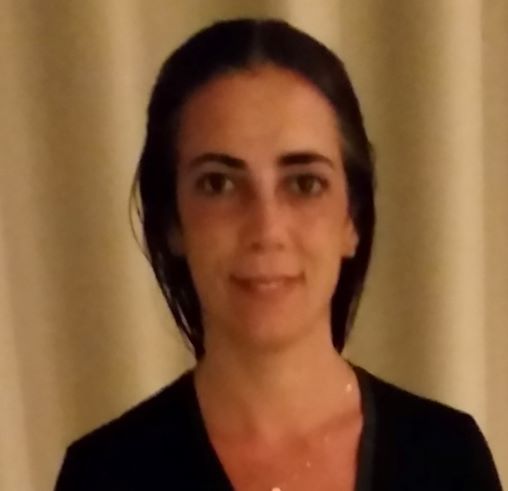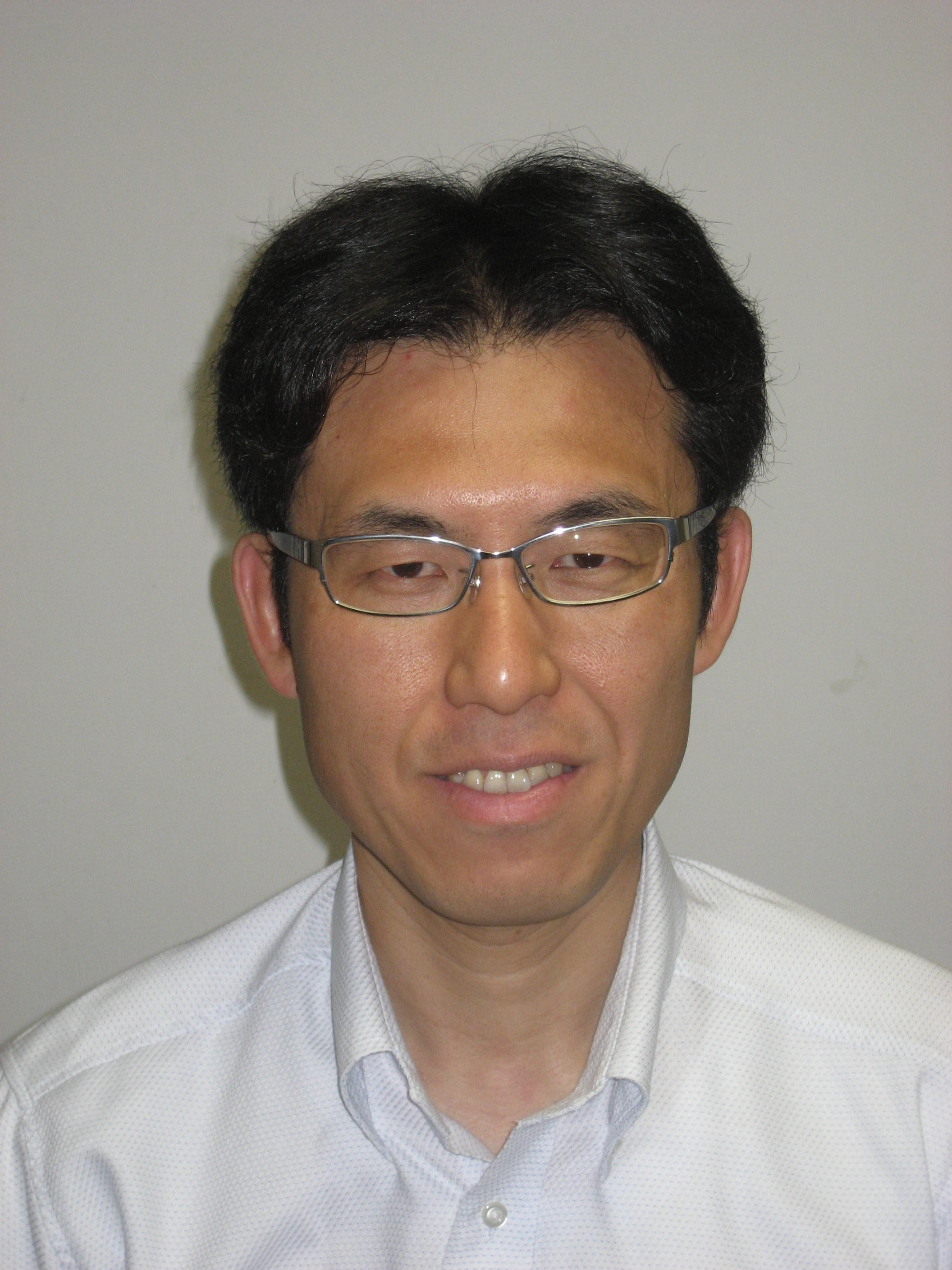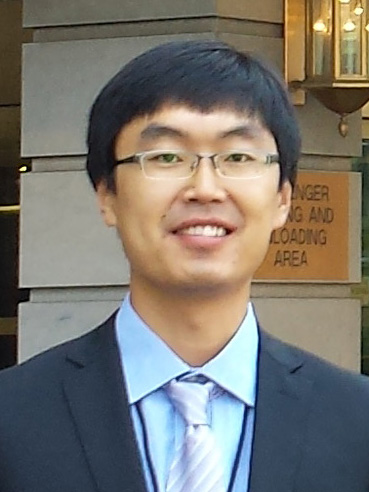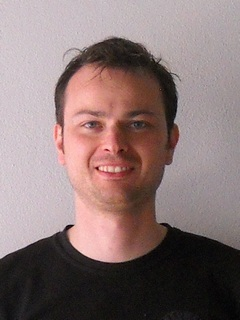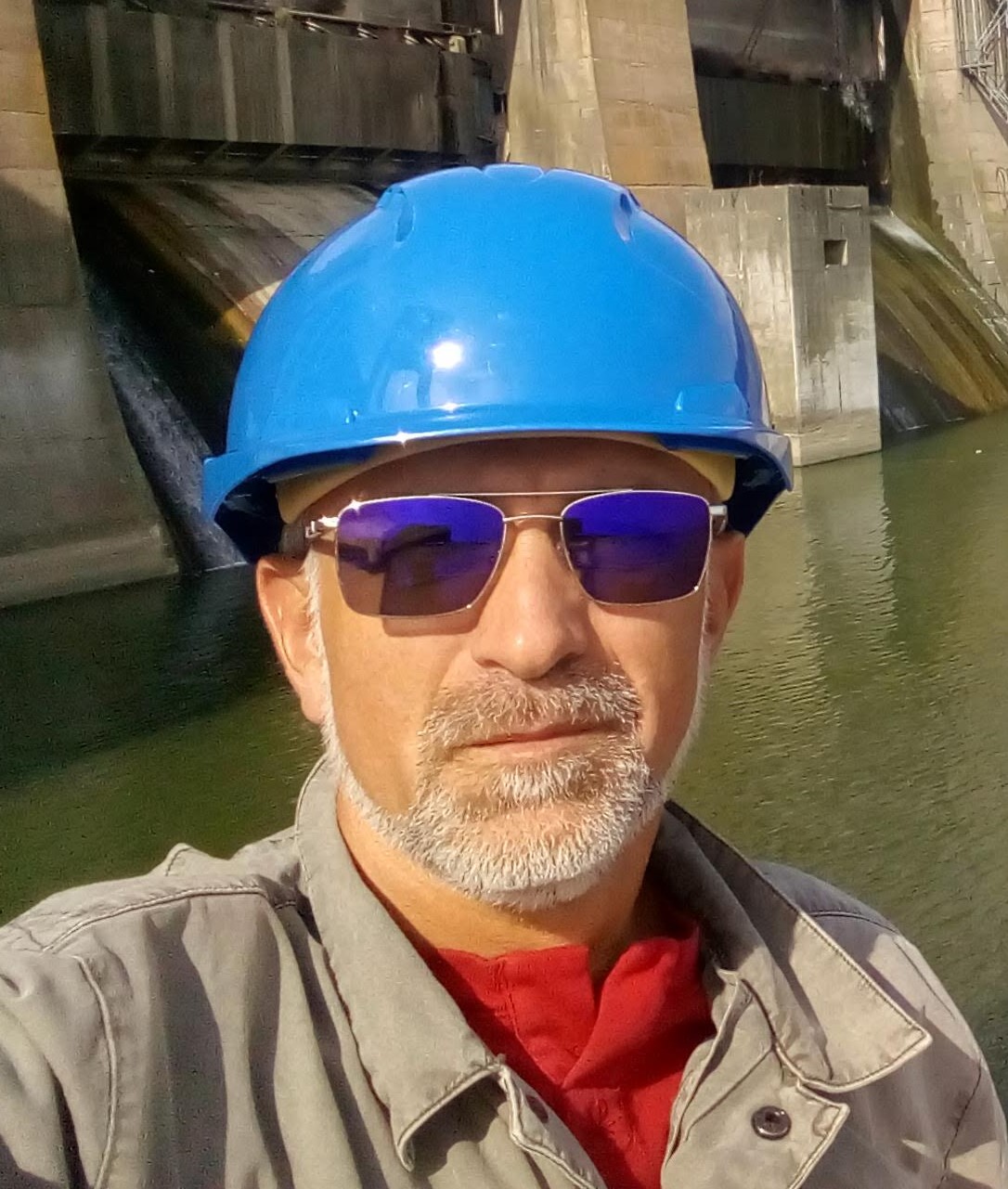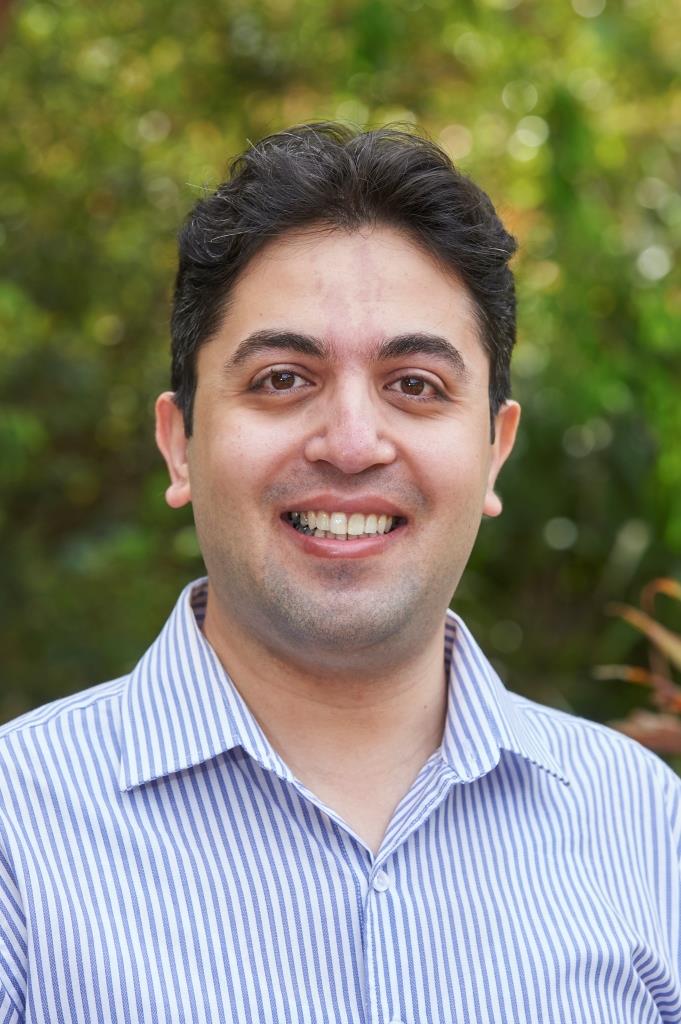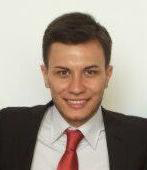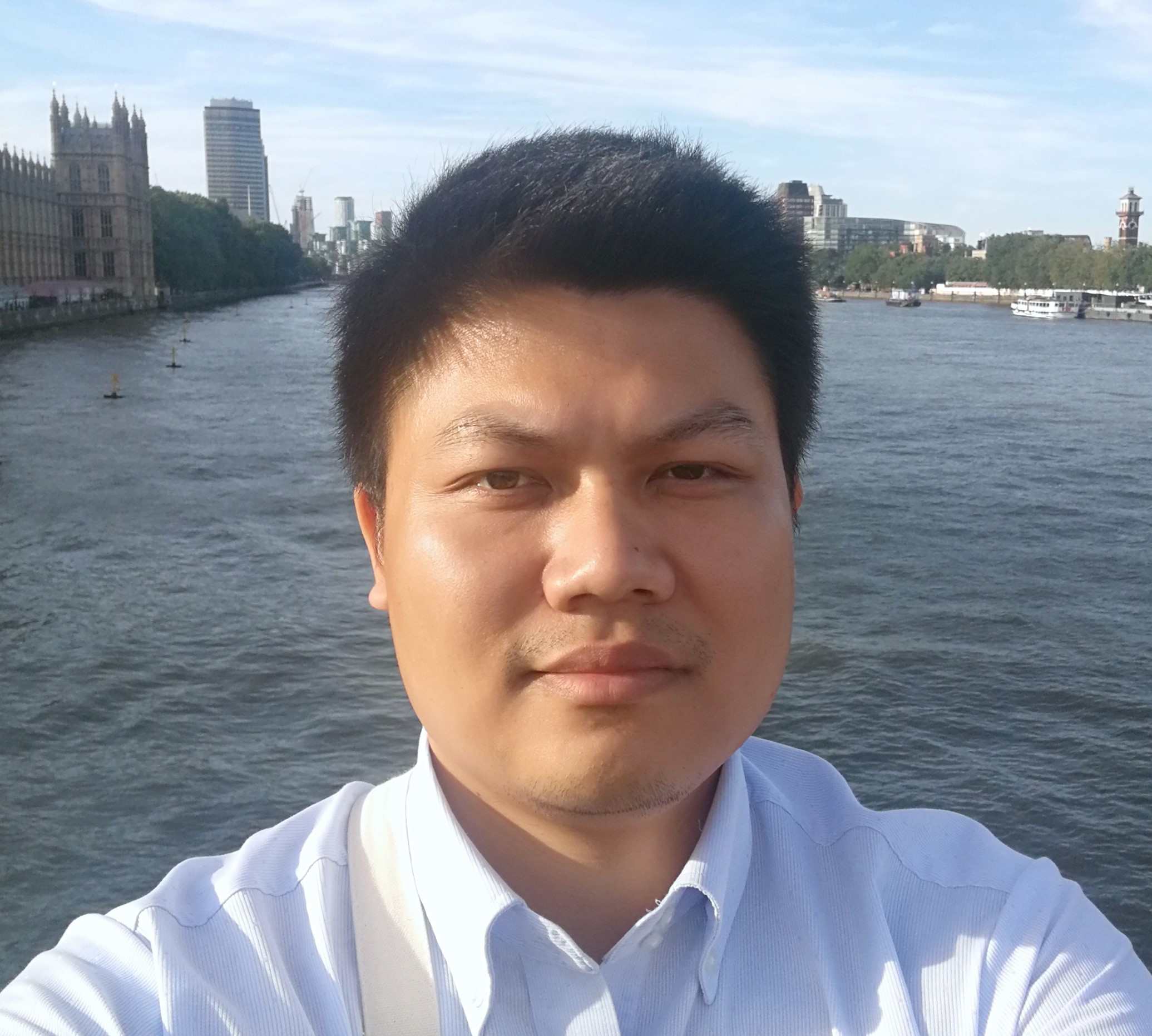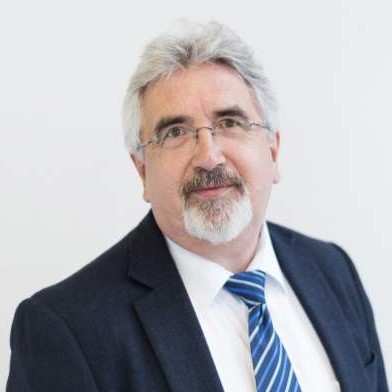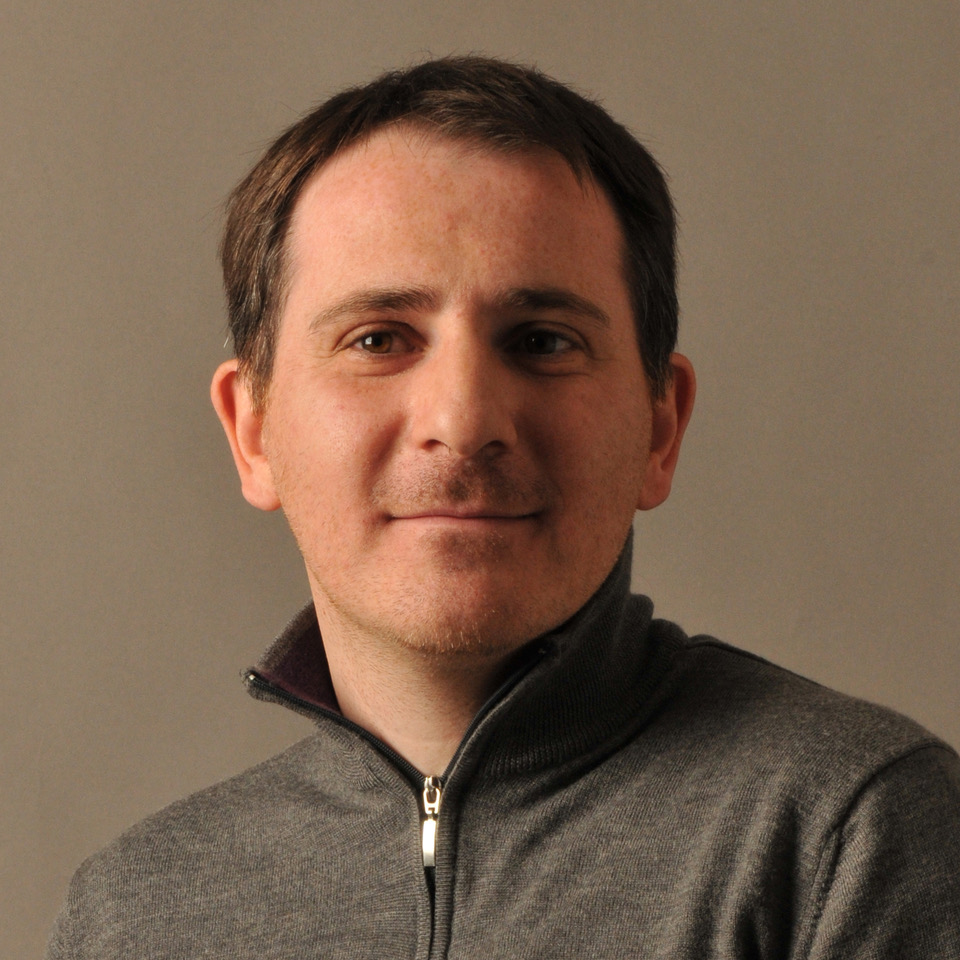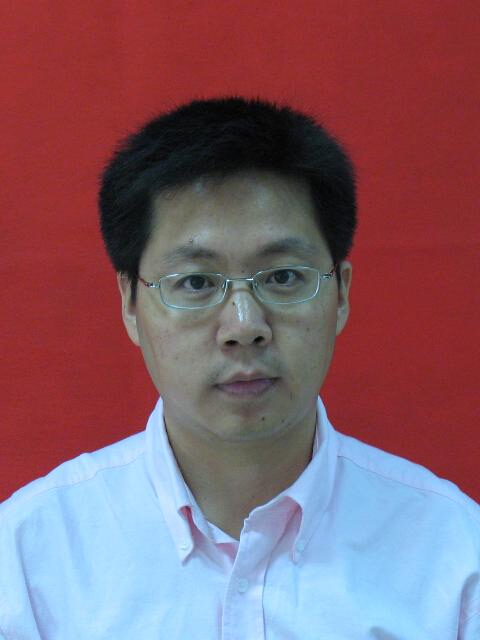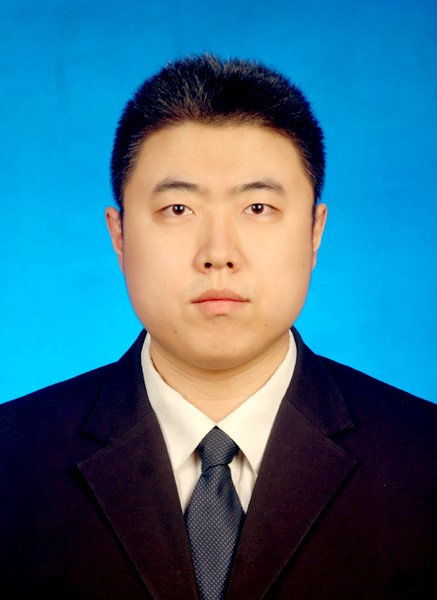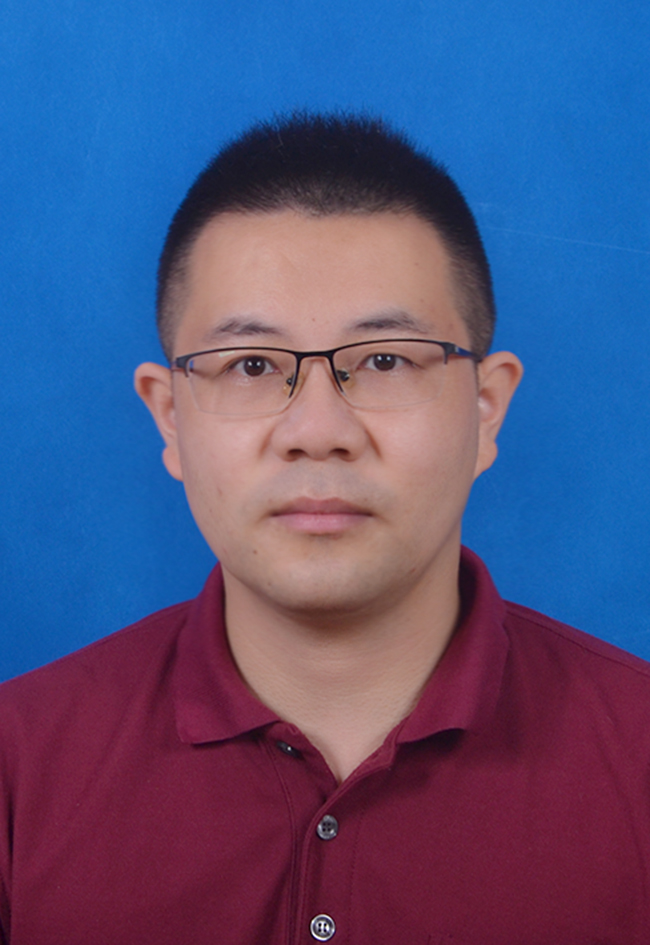Invited Speakers
Dr. Diana Enescu
Department of Electronics, Telecommunications and Energy,Valahia University of Targoviste, RomaniaSpeech Title: Investigations on the Thermal Energy Storage Principles – Classification, Characteristics, and Applications
Abstract: Thermal energy storage (TES) systems consist of an attractive set of technologies to bridge the discrepancy between the energy demand and energy supply over time. TES helps significantly to meeting society’s requirements for more efficient and environment-friendly use of energy. TES systems are interested in thermal applications like heating and cooling of spaces and water, including temperature stabilisation and air conditioning. The utilisation of TES can improve the system efficiency by smoothing the variations on supply and demand patterns, the temperature variations, and growing the cooling/heating source reliability.
This presentation addresses the main types of TES systems, their various characteristics, advantages, and drawbacks. In addition, different TES applications suitable for renewable energy systems are discussed.
Prof. Maria Jose Lavorante
Institution of Scientific and Technological Research for Defense, ArgentinaSpeech Title: Efficiency improvements in a water electrolyzer by applying a chemical treatment to its electrodes
Abstract: Hydrogen is an energy carrier that has to be produced by the use of energy from a variety of raw hydrogen-rich materials, including water. Electrolysis allows interconverting electricity into hydrogen and this gives the possibility to use this process for the storage of excess renewable energy. Therefore, the development or improvement of water electrolyzers, is a promising option for a more efficient use of the renewable resources and the production of hydrogen.
In order to evaluate the effect of applying a chemical pickling treatment to the surface of 316L stainless steel electrodes and to study the benefits or detriments of their performance in alkaline electrolysis of water, four experiments were carried out. Therefore, the following were evaluated: a) a pair of electrodes in their original state (OS); b) one pair after the application of a chemical pickling treatment (ICPT) c) one pair after the application of two treatments (IICPT) and d) one pair after the application of three treatments (IIICPT). The results show that the experiment where both electrodes are subjected to a single chemical pickling treatment present the best performance. Successive treatments lead to a detriment of the efficiency of the pair of electrodes. Figure 1.a, presents the polarization curves of the different experiments at a temperature of 35ºC and 1.b, compares the results obtained from the three systems with chemical pickling treatment at a working temperature of 52ºC. At applied potential differences close to the decomposition of water, the values of current density do not seem to be significant. Current density of ICPT becomes more noticeable, on average, 54% higher when compared with IICPT and 167% higher when compared with IIICPT.
Then, the inorganic ions present were identified in the solution resulting from the chemical pickling treatment. The process was carried out in a systematic way, using recognition chemical reactions, through the formation of complexes or salts that are evidenced by unique and characteristic colors. The cations analyzed were nickel, chromic, ferrous and ferric. The cation present in the solution is ferrous. Throughout the speech there will be a detailed description of the treatments used and the chemical analysis performed.


Figure 1. Polarization curves: a) of the four experiments at 35ºC and b), results obtained from the three systems with chemical pickling treatment at 52ºC.
Dr. Yifei Wang
School of Mechanical Engineering and Automation, Harbin Institute of Technology (Shenzhen), ChinaSpeech Title: Research on Microscale Electrochemical Power Sources: Fuel Cells, Metal-Air Batteries and Aqueous Ion Batteries
Abstract: With the development of emerging micro electronics devices with miniwatt or even microwatt power requirement, such as lateral flow testers, RFID tags and various biosensors, the development of associated micro power sources will be of key importance. Since these electronics gadgets will be produced in great quantity and widely applied, the cost and environmental impact of the associated power unit should be carefully considered. Conventional primary dry batteries and secondary Li ion batteries are either too hazardous or too expensive for this task, while both of them lack the continuous operation ability. Regarding this, the miniaturization of various green energy technologies, such as fuel cells, metal-air batteries and aqueous ion batteries, is getting more and more research interest. Fuel cells are well known for their uninterrupted operation as long as fuel and oxidant are provided, which are especially suitable for wearable healthcare sensors with long working time. To reduce their scale and cost, microfluidic fuel cell with no need for expensive polymer membrane electrolyte is a suitable strategy, whose performance can be greatly improved by tailoring the mass transport inside. Our group has proposed several methods to improve the fuel utilization, voltage output and discharge stability of microfluidic fuel cells, including the fuel-breathing anode, circular stacking and catalyst layer cracking technologies. Compared with fuel cells, metal-air batteries are well known for their higher voltage and lower fabrication cost, which are especially suitable for disposable electronic applications. To simplify the fluidic transport and hence system structure, our group has developed a series of paper-based metal-air batteries with high performance and energy efficiency, which utilize the capillary action of paper to deliver electrolyte passively. Furthermore, to deal with electronic devices with repeated usage, our group has also studied the rechargeable aqueous ion batteries, using low-cost Al or Zn metal as negative electrode directly. To lower down the water electrolysis side reaction within aqueous system, a super-concentrated “water-in-salt” electrolyte is employed and proved to be effective. Finally, various commercial printing technologies are utilized to achieve an intelligent manufacture of these microscale power sources together with great device flexibility.
Assoc. Prof. ChM. Dr. Yusran Sulaiman
Department of Chemistry, Faculty of Science, Universiti Putra Malaysia, MalaysiaSpeech Title: Layer-By-Layer Assembled Ni-Co Layered Double Hydroxide on Polypyrrole/rGO for High Performance Supercapacitor
Abstract: A layer-by-layer (LBL) composite of polypyrrole/reduced graphene oxide|nickel-cobalt layered double hydroxides (PPy/rGO|Ni-Co LDHs) was prepared via chemical polymerization, hydrothermal and vacuum filtration. This conscientiously layered composition is free from any binder or surfactants which is highly favorable for supercapacitors. The PPy/rGO serves as an ideal backbone for Ni-Co LDHs to form a free-standing electrode for high-performance supercapacitor and enhanced the overall structural stability of the film. The well-designed layered nanostructures and high electrochemical activity from the hexagonal flakes like Ni-Co LDH provide large electroactive sites for the charge storage process. The PPy/rGO|Ni-Co LDHs unveiled outstanding supercapacitive performance with a maximum specific capacitance of 1018 F g-1 and specific energy of 46.5 Wh kg-1. The PPy/rGO|Ni-Co LDHs symmetrical electrode in the current study is the best reported for the two-electrode system for PPy- and LDHs- based composites.
Dr. Claudia Masselli
University of Naples Federico II, ItalySpeech Title: The State of the Art, the Breakthrough of the Elastocaloric Cooling and the Development of SUSSTAIN-EL, the First Italian Elastocaloric Device
Abstract: Nowadays about 20% of the worldwide energy consumption is attributable to refrigeration that is almost entirely based on vapor compression refrigeration. Such data derives in a driving force towards the research and development of new cooling techniques that could become an alternative to the vapor compression, meeting the requirements of environmental and energy sustainability. In the general framework of the various emerging proposals, in the scientific literature noteworthy is the class of solid-state cooling techniques based on the caloric effect. Caloric effect is a physical phenomenon manifesting in an increase or a decrease of the temperature of a caloric material due to the adiabatic variation of the intensity of an external field and that is applied. The nature of the applied field (magnetic, electric, mechanical) particularizes it in magneto-, electro-, mechano- (elasto- or baro-) caloric effect. The main advantages shown by caloric refrigeration refer to improvements in terms of energy efficiency and reduction of the environmental impact. This is due both to the solid-state nature of the materials employed as refrigerants (therefore characterized by no global warming potential and zero ozone depletion potential) and to the intrinsically reversible nature of the processes associated with the fields. The choice of the caloric material to be used as refrigerant is a key point for the development of efficient refrigeration systems as it must respond to some specific requirements connected to: the toxicity, the ease of synthesis, the manifestation of a large caloric effect in the range of temperature required for the application, to the mechanical resistance and to the high workability, low costs and ease of availability at international level. In the field of caloric cooling scientific community has devoted the attention specifically toward magnetocaloric and elastocaloric refrigeration. Elastocaloric refrigeration is based on the latent heat associated with the transformation process of the martensitic phase, found in Shape Memory Alloys (SMA) when they are subjected to uniaxial stress cycles of loading and unloading. SMAs are characterized by the mechanical property of being able to return to the initial form once the uniaxial stress has been removed. By exploiting this effect in a reverse regenerative thermodynamic cycle called "Active elastocaloric regenerative refrigeration cycle (AeR)", a satisfactory cooling effect is achievable. The prototypes of elastocaloric cooler developed so far in the world are less than ten units and they are still in a “pre-competitive development activity-phase”, not close to the industrialization and commercialization, yet. Italy has not presented its first prototype of elastocaloric cooler to the scientific community, yet.
The aim of this prensentation is to focus on the main breaktrough of the caloric and more specifically elastocaloric cooling technology in order to provide a general framework of the state of the art. Moreover, the design processes and the steps of development of the first Italian elastocaloric device: SSUSTAIN-EL will be introduced.
Dr. Ahmed Kouidri
Department of thermal energy, USTHB, AlgeriaSpeech Title: Experimental Investigation of Forced Convection in Unconsolidated Porous Media
Abstract: The aim of this work is to make a comparative experimental study on forced convection between two cases: empty channel and channel filled with unconsolidated porous media (metal chips). This study is based on two parts: a thermal part that deals with the intensification of the heat transfer coefficient h, and a hydrodynamic part that deals with the pressure losses, in the two cases.
The experiences are made using a test section built in-situ. During the experimentation, the mass flux of water varying from 1.4 l/min to 4.2 l/min and the heating power is equal to 140 W. The using metal chips are made from hard steel.
The results show that the insertion of metal chips made from hard steel in the channel intensified the mean heat transfer coefficient with a factor equal to 1.9. While the pressure drop is 4 times more important in the channel filled with chips compared to the empty one. To facilitate the prediction of Nusselt number and friction factor, two correlations were developed for each one of them.
Assoc. Prof. Akira Nishimura
Division of Mechanical Engineering, Graduate School of Engineering, Mie University, JapanSpeech Title: Approach to Optimize the Components Combination of PEFC for Target Operation Temperature Indicated by NEDO Road Map in Japan
Abstract: According to the New Energy and Industrial Technology Development Organization (NEDO)’s road map in Japan, a polymer electrolyte fuel cell (PEFC) is required to be operated at 90 and 100 ℃ for stationary and mobility application respectively from 2020 to 2025. The PEFC is normally operated from 60 to 80 ℃. If the PEFC is operated at a higher temperature, the following advantages can be expected: (i) enhancement in the electrochemical kinetics of electrodes, (ii) scale-down of the cooling system because of higher temperature difference between the stack of PEFC and the coolant, and (iii) durability enhancement toward CO in lower quality reformed H2. However, we have to consider the following problem at the same time: (i) degradation of the membrane material, (ii) catalyst corrosion, and (iii) gas flows, pressure, temperature, and non-uniform distributions of voltage and current in PEFC. These problems should be resolved in order to commercialize PEFC operating in a relatively high-temperature range. Consequently, it is necessary to analyse heat and mass transfer mechanisms in the PEFC and optimize the components of PEFC to enhance the power generation performance and stability in the high temperature range. This paper reports the investigation result on it.
Prof. Xinhai Xu
Harbin Institute of Technology, ChinaSpeech Title: Steam Reforming of Liquid Fuels to Produce Hydrogen-rich Syngas for High Temperature Fuel Cells
Abstract: High temperature proton exchange membrane fuel cells (HTPEMFCs) and solid oxide fuel cells (SOFCs) can generate both electric power and heat due to their high operating temperatures. The high temperature fuel cells attract lots of attention particularly for off-grid applications with demand of cogeneration. One major issue regarding with such fuel cell-based cogeneration systems is the supply of fuel gas. Compressed or liquid hydrogen storage equipment is not practical due to the technical difficulties. A possible solution is to produce hydrogen on-site by steam reforming of liquid fuels. The HTPEMFCs can tolerate carbon monoxide in the fuel gas up to 3% because of the high operating temperature in the range of 160-200 oC. Therefore, the reformate produced by steam reforming of methanol can be directly fed into HTPEMFCs as fuel gas. The multichannel micro packed bed reformer developed in our lab can efficiently generate syngas with about 74% H2, 25% CO2, and 1% CO in the dry reformate. Fuel flexibility is one major advantage of SOFCs, and CO is considered as a fuel instead of a harmful composition because SOFCs usually operate in temperatures between 700-1000 oC. Steam reforming of heavy hydrocarbon fuels such as gasoline and diesel can be directly combined with SOFCs for cogeneration. Our lab developed a compact monolithic reformer for SOFCs. Reforming of n-hexadecane (C16H32) at 800 oC can produce a dry syngas with about 70% H2, 15% CO, 15% CO2 and <1% CH4. The syngas was supplied to a 100W SOFC stack and power was successfully generated.
Dr. Stefano Rinaldi
University of Brescia, ItalySpeech Title: Analysis of Communication Requirements for Demand-Side Management of Electric Vehicles in Smart Grid Scenario
Abstract: The rising concerns about global warming and environmental pollution are increasingly pushing towards the replacement of road vehicles powered by Internal Combustion Engines (ICEs). Electric Vehicles (EVs) are generally considered the best candidates for this transition. Nevertheless, the existing power grids and EV management systems are not yet ready for a large penetration of EVs. The so-called Vehicle-to-Grid (V2G) concept has a relevant role in this scenario, by providing the communication capabilities required by advanced control and Demand-Side Management (DSM) strategies. Moreover, V2G technologies are fundamental when the energy produced and stored by Distributed Energy Resources (DERs), in particular from Renewables sources, should be preferred to charge EVs. The communication requirements for the DSM of EVs in urban environments will be discussed in the presentation, by focusing on the mobile communication among EVs and smart grids. A specific system architecture for the DSM of EVs moving inside urban areas is proposed and discussed in terms of the required data throughput and communication latency. In addition, the use of a Low-Power Wide-Area Network (LPWAN) solution—the LoRaWAN technology—is proposed as a possible alternative to cellular-like solutions, by testing an experimental communication infrastructure in a real environment. The results show that the similar LPWAN technologies are capable to handle an adequate amount of information for the considered application.
Dr. Vladimir M. Shiljkut
Public Enterprise “Electric Power Industry of Serbia”, Republic of SerbiaSpeech Title: Decarbonisation of Power Systems Based on Fossil Fuels – Challenges, Possibilities and the Role of Demand Side Participation
Abstract: The increasing pollution of the environment and the jeopardising of the sustainable development of human civilisation have imposed the need for a qualitative shift towards cleaner and safer technologies in the field of energy, especially electricity. Countries whose electricity generation is based primarily on fossil fuels, such as coal, face serious challenges in ensuring their future energy independence and in providing security of supply to their end users. Therefore, it is necessary to explore all possible options and directions of future development, not only as mutually alternative, but also as cumulative, considering their synergistic potential in compensating electricity that will appear as deficient, by shutting down generation capacities based on fossil fuels. Also, the need for mutually harmonised development and application of certain solutions was emphasised. For example, an excessive share of renewable energy sources with very intermittent generation, without the presence of significant energy storage capacity and/or other sources in the power system that can compensate these rapid fluctuations in power, would lead to the problem of balancing the system and disrupting its flexibility and stability. The supporting pillars on which the construction of a safe and decarbonised power system can rest will be listed and briefly presented. Special attention will be given to the possible role and contribution from the demand side, i.e., end users; for example by increasing their energy efficiency, utilising the heat capacity of buildings, demand response and direct demand side management performed by system operator.
Prof. Farhad Shahnia
Murdoch University, AustraliaSpeech Title: Recent and Future Research on Microgrid Clusters
Abstract: Electricity systems around the world are experiencing a radical transition as the consequence of replacing fossil fuels, used for electricity production, by sustainable and cleaner energies. The growing penetration of renewable energies requires smarter techniques capable of handling the uncertainties of these intermittent sources. Along with this change, traditionally centralised power systems are also converting into distributed self-sufficient systems, often referred to as microgrids, that can operate independently. This talk will focus on remote area microgrids as a hot research topic in Australia and Southeast Asia that have hundreds of remote and off-grid towns and communities, and islands. It is expected that remote area microgrids will strongly benefit these remote locations in the forthcoming years. This talk will briefly introduce the progress of research in this field around the world and Australia, and will also discuss some of the technical challenges associated with interconnection of neighbouring microgrids as a key step to improve their survivability in the course of unexpected imbalances between the demand and the available generation from intermittent renewable resources.
Dr. Luigi Costanzo
Department of Engineering - Università degli Studi della Campania “Luigi Vanvitelli”Speech Title: Tuning Techniques for Piezoelectric and Electromagnetic Vibration Energy Harvesters
Abstract: In applications involving Resonant Vibration Energy Harvesters (RVEHs) the maximization of the extraction of power is of fundamental importance and a very crucial aspect of such a task is represented by the optimization of the mechanical resonance frequency. Mechanical Tuning Techniques (MTTs) are those techniques allowing the regulation of the value of RVEHs mechanical resonance frequency in order to make it coincident with the vibration frequency. A very great number of MTTs has been proposed in the literature, and in this presentation, the main of them are reviewed, classified and compared. In particular, the objective is to put in evidence the differences existing among the various MTTs, to compare their performance and to identify the open issues.
Dr. Quanwen Pan
Shanghai Jiao Tong University, ChinaSpeech Title: Adsorption Refrigeration Technology for Solar Cooling and Low Grade Waste Heat Utilization
Abstract: The existing refrigeration technology faces the challenges of huge energy consumption and environmental disruption. Adsorption refrigeration is attractive as an alternative solution of refrigeration technology due to the possibility to use low grade heat and green refrigerants (i.e. water, ammonia and methanol). Solar cooling and low grade waste heat utilization are the main applications of adsorption refrigeration but it is limited by the disadvantages of low efficiency, large size and high investment. This talk will focus on current situation, methods of efficiency improvement, challenge of economic benefit and typical project cases of adsorption refrigeration technology for solar cooling and low grade waste heat utilization. Emerging applications, like ultra-low waste heat recovery of data center and fuel cell, are especially concerned. This talk will also give a brief introduction on the recent progress of research of adsorption refrigeration, especially the rapid development of adsorbent materials.
Prof. Dr.-Ing. Hans-Peter Leimer
BBS INSTITUTe, Germany / Hefei University, ChinaSpeech Title: Low Carbon Economy in The Cities of China - Possibilities to Estimate the Potential of CO2-Emissions
Abstract: Increasing urbanisation and climate change are one of the greatest challenges in the 21st Century. Many regions already face different negative impacts on cities such as growing local pollution, solid and liquid waste, traffic congestion and noise. A growing consumption of fossil fuels in cities leads to increasing CO2-emissions accelerating climate change. All over the world and also in China, cities are trying to reduce their carbon footprint. In that context, the concept of so called “low carbon cities” is promoted. Currently, 79 cities in China are considering low carbon concepts. To build a low carbon city is not an easy task as there are various barriers to be removed, such as financial, traditional and institutional barriers. Buildings belong to the most traditional and slow-changing innovative areas in industry. Further solutions are different for hot and warm climates than for cold climates. Due to a very fragmented and divided structure in smaller enterprises and in different areas, a holistic approach is hardly to get. In order to detect and to investigate the CO2 saving potential in the different building types of China, the following steps of work had been done:
• Numeric simulation of the range of the energy demand from the selected building types
• Calculation of the energy saving-/ CO2 emissions saving potential of each building type
• Forecast of the CO2 emissions saving potential for a whole pilot-region
In scope of this investigation, the available values from measurements of buildings/building categories will be compared to numeric calculations of energy requirement.
Dr. Marco Pasetti
University of Brescia, ItalySpeech Title: Remote Monitoring and Control of Distributed Interface Protection Systems in Smart Grids by using LoRaWAN
Abstract: The increasing penetration of Distributed Generation (DG) from Renewable Energy Resources (RESs) is heavily affecting the design and operation of modern power grids. The growing diffusion of dispersed generators installed at end users’ premises is calling for the adoption of advanced control and protection mechanisms, to comply with the increasing complexity of grid codes. New functions are being introduced, year over year, by national regulatory frameworks, thus often requiring the implementation of intelligent devices. This is the case, for instance, of Interface Protection Systems (IPSs), which are used to prevent the undesired islanding of distributed generators in smart and micro grids. In particular, the coordination of distributed IPSs in modern smart grid scenarios is becoming a crucial task for the safe operation of modern power grids. However, the adoption of newer and smarter units is only half of the story, and the overall costs following the deployment of proper communication infrastructures may become critical. To cope with this issue, the use of low-cost communication systems must be investigated, and their applicability must be properly addressed. In this speech, the use of the Long-Range Wide Area Network (LoRaWAN) technology is suggested as a viable approach to implement the coordination of IPSs, and its applicability evaluated by providing sensitivity analyses. A proper communication architecture based on the LoRaWAN Class B technology was proposed by following the definition of the required IPS monitoring and control functions. A specific data model structure was also defined to allow the computation of the payload of the communication. The scalability analysis was carried out by computing the number of devices that can be handled by a single LoRaWAN gateway (GW) and the maximum expected time of response between a triggering event and the arrival of the related coordination command. The results of the study showed that up to 312 devices can be managed by a single GW, by assuring a maximum response time of 22.95 s. A faster maximum response time of 6.2 s is also possible by reducing the number of managed devices to 12.
Prof. Guihua Tang
Xi’an Jiaotong University, ChinaSpeech Title: Enhancing Thermoelectric Properties of Two-Dimensional SnSe Monolayers by Directionally Doping with One-Dimensional Mn Nanowires
Abstract: Two-dimensional SnSe monolayers have an excellent prospect in thermoelectric applications. We investigated the structure, electron and phonon properties of 2D monolayer SnSe doped with 1D Mn nanowires using the first principle calculation within density functional theory. This directional doping is totally different from the existing random doping methods. The Boltzmann theory for electrons under relaxation time approximation was employed to obtain the Seebeck coefficient and electrical conductivity. The lattice thermal conductivity was calculated using the Boltzmann Transport Equation method and the Debye-Callaway model. The results show that the doping of 1D Mn nanowires can enhance the phonon scattering process by introducing wire defects, and reduce the lattice thermal conductivity. By adjusting the width between nanowires, record high ZT values from 0.71 at 200 K to 3.76 at 650 K are achieved, 37.8% larger than the intrinsic monolayer SnSe on average.
Dr. Xianlong Meng
Northwestern Polytechnical University, ChinaSpeech Title: Optical Optimization Model for Space-based Solar Power Station
Abstract: SPS-ALPHA, a novel concept of Space-based Solar Power Station (SSPS), is composed by a large number of small modules that enables the modularity and low cost of machining/space transport. The optical performance of SPS-ALPHA Mark-I type had been investigated in last year. It was found that the cosine effect and blocking shadow effect of ray path exist in the Mark-I type model and make the optical efficiency unstable on orbit. The totally new optical model for SPS-ALPHA Mark-Ⅱ, which adopts conical structural system, would be developed in current study, in order to find the possibility of a better solution for improving the optical efficiency. The source-target mapping would be established considering the effect of solar cone angle. A two-step feedback method is adopted, including initial Monte-Carlo ray tracing (MCRT) process, source-target re-mapping by Ant Colony Optimization (ACO) algorithm and second MCRT simulation. Finally the optimal design parameters and adjustment strategy of SPS-ALPHA Mark-Ⅱ would be discussed at different tracking angle and structrual parameters. This method can mostly ensure high optical efficiency at every moment on orbit.
Prof. Jianxiong Zhu
School of Mechanical Engineering, Southeast University, Nanjing, ChinaSpeech Title: Continuous direct current by charge transportation as power source for next-generation IoT and realtime virtual reality applications
Abstract: A single-electrode nylon fibres enhanced polytetrafluoroethylene (PTFE) electret flexible film with hollow cylinder structure for mechanical energy harvesting is reported. The power was generated by the enhanced electret PTFE with an electrostatic effect between the conductor carbon black silicone rubber mixture electrode film and a surface of the deformation PTFE film. It was found that the nylon fibres enhanced PTFE electret film can get about 1.45 times Voc than the pure PTFE with hollow cylinder structure during the mechanical energy harvesting. We also found that with the distance of travel is linear related with the peak value of short-circuit current and open-circuit voltage. A random test using finger tap to light 8 light-emitting diode was demonstrated the mechanical energy conversion performance of the prototype with the generated maximum peak short-circuit current 0.35 μA and an open-circuit voltage 72 V, respectively. At the end, an ultrasonic test was conducted to demonstrate the quick response and flexibility of the prototype at the extra high frequency.
Dr. Yuanjie Su
State Key Laboratory of Electronic Thin Films and Integrated Devices, School of Optoelectronic Science and Engineering, University of Electronic Science and Technology of China (UESTC), ChinaSpeech Title: Self-powered Respiratory Monitoring Enabled by Triboelectric Nanogenerator
Abstract:
Introduction
Diabetes is a global chronic disease arising from the metabolic disturbances. Detection of acetone in human respiration offers a non-invasive and painless approach for diabetes diagnosis. With increasing vehicles ownership and emission, exhaust from automobiles, i.e. nitrogen dioxide (NO2) and its derivatives, imposes huge threaten on the air quality and public health. However, a majority of the gas sensors demand additional energy supply and undoubtedly increase the energy consumption of the whole device, inhibiting the portability and mobility of the device.
A bionic alveolus-shaped triboelectric gas sensor (ATGS) has been designed and fabricated for spontaneously NO2 detection and respiratory monitoring at room temperature. Furthermore, a sensing modeling was proposed by combining the thermodynamic analysis and finite element calculation together with phase-field simulation. This work not only provides a facile, low-cost and portable approach for active gas sensing and real-time physiological assessment, but also proposes a theoretical modeling for self-powered gas detection.
Device fabrication
The configuration of ATGS is based on contact-separate mode TENG. A layer of acrylic with the dimension of 40mm×40mm×1mm was tailored by laser etching machine, together with a layer of latex with the dimension of 40mm×40mm×0.2mm was cleaned by ethanol and deionized water. Then copper electrode with a thickness of 200nm was coated on the one side of the tailored acrylic sheet by thermal evaporation, followed by deposition of prepared suspensions as the gas sensitive material via gas spraying. Subsequently, the WO3/copper coated acrylic sheet was etched through laser etching machine to create a central hole with diameter of 4.0 mm. Then, the latex layer was attached to WO3/copper coated acrylic sheet to form the gas test chamber. Epoxy resin was used to seal the edges between latex film and acrylic sheet to ensure the gas tightness. A plastic tube was integrated as the inlet and outlet of the target gas into the sensor.
Method
The internal combustion engines burning fossil fuels generate and release huge amount of nitrogen dioxide, which is large threat to environment and public health, as shown in Figure 1a. To address the concern, we designed an alveolus-shaped triboelectric gas sensor (ATGS) for both nitrogen dioxide detection and personal breath behavior monitoring, as the configuration shown in Figure 1b. It was vertically laminated with latex, sensitive material, copper electrode and a plastic air conduit serving as the gas conducting channel. Here, latex film is selected as the contacting layer for its good stretchability and strong electron affinity. Figure 1c shows the photograph of the as-fabricated AIMS, where the gas inflation will hold up the latex membrane to form a tent while the deflation will shrink the tent. During this processing, the latex forms a cycle of contact and separation with the bottom substrate material, pumping the electrons to flow back and forth between the copper electrode and the ground. The working principle and finite element calculation of the as-prepared AIMS is elucidated in Fig. 1d and 1f.
Results and Conclusions
To explore the gas sensing capability of the as-fabricated ATGS, the output voltage versus NO2 gas concentrations from 0 ppm to 100 ppm were investigated. Compared with 0.01 g and 0.1 g alkali treatments, the device with 0.02 g NaOH treatment revealed a much better sensitivity and linearity, as shown in Fig. 2a, where a response of 452.44% was achieved when being exposed to 100 ppm NO2. In addition, as presented in Fig. 2b, a linearity of 0.976 is observed for the AIMS with 0.02 g NaOH treatment, demonstrating its capability of actively detecting nitrogen dioxide in a wide concentration range. The ATGS also demonstrated capability in distinguishing diverse breathing patterns without any power supply (Fig. 2c). In addition, the NO2 response is at least 20 times higher than other gases, implying a good selectivity (Fig. 2d)
A phase-field simulation and finite element calculation were implemented to numerically verify the permittivity effect on the electric field and polarization of sensitive film. As shown in Fig. 3k, the polarization increases with increasing relative dielectric constant, while the electric field follows an opposite trend. Given the depolarization field is proportional to the polarization once the device is fixed, the increase of permittivity facilitates the depolarization of the sensitive layer, which is in agreement with the aforementioned theoretical derivation and experimental data.

Self-powered bionic membrane sensor for respiratory monitoring and portable physiological analysis
REFERENCES
[1] Yuanjie Su, et al, ACS Nano, 2020, 14(5), 6067-6075.
[2] Yuanjie Su, et al, Nano Energy, 2020, 74, 104941.
[3] Yuanjie Su*, et al, Nano Energy, 63, (2019) 103829.
[4] Yuanjie Su, et al, Applied Physics Letters, 115, (2019) 073504.
[5] Yuanjie Su, et al, Nano Energy, 47, (2018) 316-324.
[6] Yuanjie Su, eta al, Sensors and Actuators B: Chemical, 251, (2017) 144.
[7] Yuanjie Su*, et al, Materials Research Express, 7, (2020) 725.
Dr. Miodrag Forcan
Faculty of Electrical Engineering, University of East Sarajevo, University of East Sarajevo, Bosnia and HerzegovinaSpeech Title: A Novel Technologies Empowering the Transition from Traditional Distribution Network to Smart Grid
Abstract: Nowadays, a traditional distribution networks are facing many challenges to accommodate renewable energy sources (RES) and plugin electric vehicles (EV). At the same time, distribution network management is undergoing changes to embrace the deregulation of electricity market. Under these challenging conditions, it is mandatory to enable improvements in energy efficiency, network reliability, operational efficiency, security, and safety. A solution for all previous challenges is obtained in the Smart Grid concept. Transition from traditional distribution network to Smart Grid is enabled by technology innovations in power, communication, and information systems. In this brief review a key new technologies are identified as a driving force for the Smart Grid concept implementation. Fault indicators (FI) and remote-controlled switches (RCS) empower the advanced distribution system automation (DSA), thus enabling network self-healing function. Phasor measurement units (PMU) specifically designed for distribution network enable system state awareness at low cost. Advanced metering infrastructure (AMI) representing the first step in transition towards SG concept is empowered by novel Cloud/Fog/Edge computing technology. 5G new radio (NR) communication technology has a potential to be a host for the majority of communication requirements in the future distribution networks through the concept of network slicing. The main objective of this talk is to highlight and explain the role of previous technologies in transition from traditional distribution network to SG.
Dr. Bablu K. Ghosh
Faculty of Engineering, University Malaysia Sabah, MalaysiaSpeech Title: Influence of Free and Binding Energy of Donor-acceptor Hetero-interface Organic Solar Cells
Abstract: Cost-effective design purpose alternative of Si-based hetero-junction, organic bulk hetero-junction (BHJ) and planner hetero-junction (PHJ) solar cells have greater energy potential. The current challenge is to develop greater open-circuit voltage (Voc) of BHJ. Though it can be partly overcome by applying interface materials but dark injection, traps and non-radiative recombination are key impediments to promote electrical performance. One of the alternatives is the development of a profound interface and it could make a variation of donor-acceptor (D-A) interface barrier. Its influences on electrical output is a significant pathway to develop OSC energy conversion performance. Acceptor greater energy offset may increase carrier lifetime or Voc and it could able to reduce thermal diffusion/injection current. However, it has a potential influence on the contact barrier of charge transport and it may reduce fill factor and current density. Driving force and recombination models temperature effect can’t be identified the Voc loss properly. The carrier transport barrier and charge transfer states (CTS) how is varied with temperature and D-A interface binding energy is the key question. The acceptor energy barrier due to Fermi-level has potential influence by D-A interface binding effects. To decline dark injection the acceptor barrier and binding effect lessening is potential. Thus binding energy and temperature effects on CTS is still an open debate. Thus driving force and binding energy inter-relationship with temperature associated activation energy are central to deliver charge transport and Voc loss.
Dr. Simona Di Fraia
University of Napoli “Parthenope”, ItalySpeech Title: Energy Efficiency in Wastewater Treatment
Abstract: Wastewater treatment is high energy-consuming, especially in terms of electricity demand that accounts for about 90% of the total energy consumption. In European countries, it is estimated to account for 1% of the total electricity consumption. For this reason, energy efficiency in wastewater treatment is attracting an increasing attention of the scientific community.
In order to analyze energy consumption and to identify some measures to improve the efficiency, a methodology similar to that proposed for energy audits of civil buildings and industrial applications is used for WasteWater Treatment Plants (WWTPs) as well. Energy consumption is influenced by several factors, such as size of the plant, stages of treatment, country. From the analysis of energy consumption in different WWTPs some general conclusions can be drawn up:
- electricity is one of the highest operating costs, roughly 25-30%;
- the specific electricity consumption is inversely proportional to the size of the plant;
- the highest energy intensive processes are aeration in the biological stage, sludge treatment and pumping, with an increase up to 50% in case of advanced biological treatment for nutrients removal.
Several strategies for energy saving have been identified, such as optimization of mechanical equipment, installation of automated control systems for regulation of aeration and modulation of pumps speed, and replacement of blowers with fine bubble aeration systems. Together with these measures, energy recovery from wastewater and its by-products and the use of other renewable energy sources should be promoted, in order to enhance sustainability of the overall process.
The aim of the presentation is to give an overview of energy demand and strategies to improve the energy efficiency in WWTPs, as well as the available indicators for the evaluation of energy performance of such users.
To be updated…


